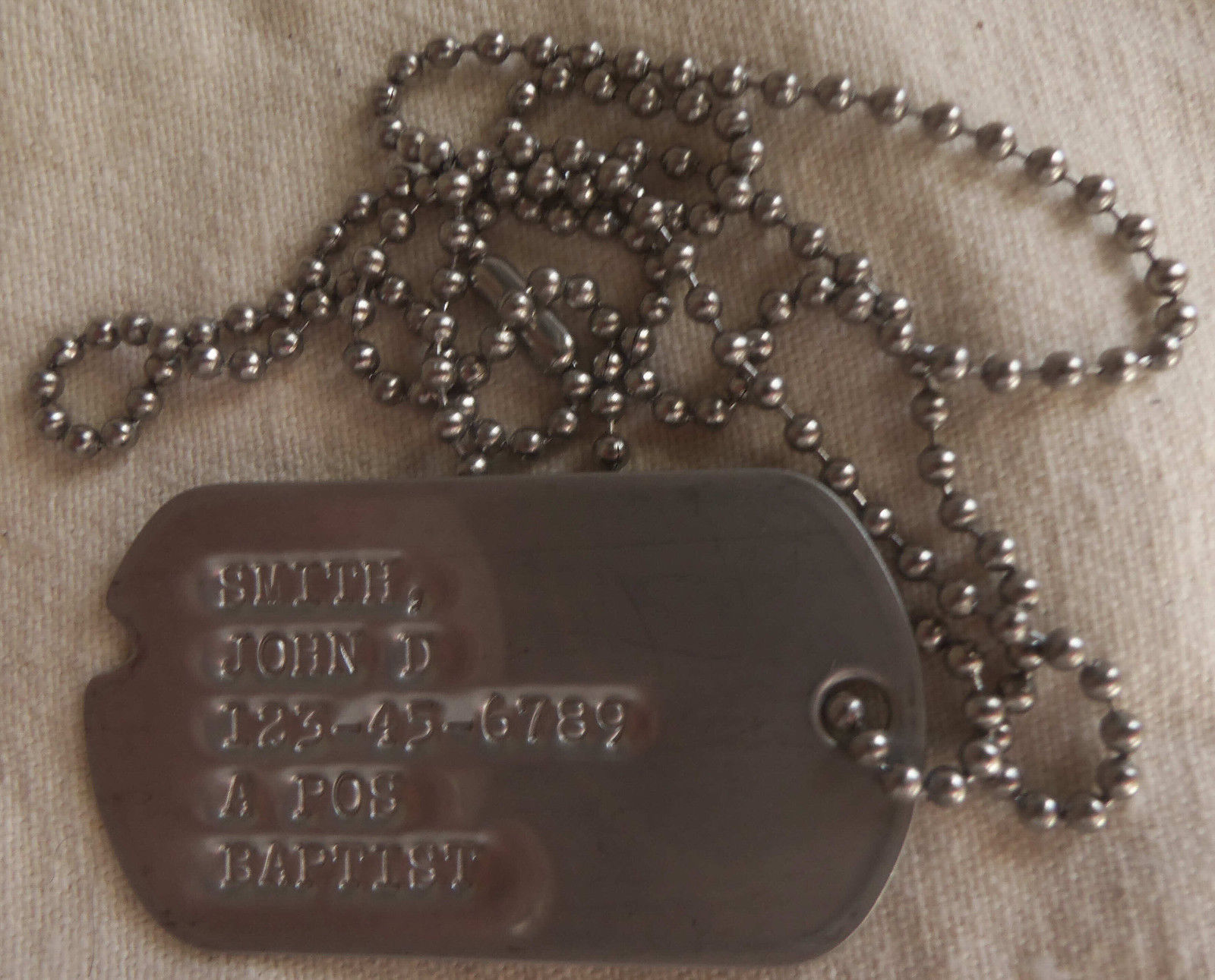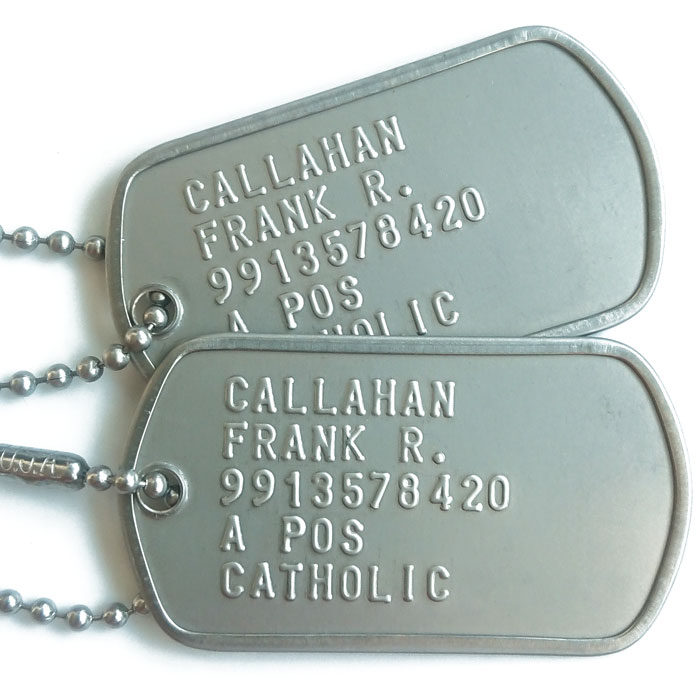
Known as the “locating notch” in military manuals, the notch helped medical personnel properly seat the dog tag into the imprinter. These would most often be 1 year apart, and preceded by a T for the first date (i.e. The dates on line 2 of the styles indicate the tetanus immunization, and the tetanus toxoid injection dates. In general, adding the name doesn’t do much for solving a lost dog situation. This makes it more difficult for a would-be thief to claim the animal as his own. If this is a concern, leave the name off of the dog tag. It’s not something you want to think about, but sometimes, pets are stolen. The other remains with the dead soldier’s body to help with identification by burial units. If the solider is killed, one of the tags is removed for official records. What happens to dog tags when a soldier dies? They often indicate religious preference as well. The tags’ primary use is for the identification of casualties they have information about the individual written on them, including identification and essential basic medical information such as blood type and history of inoculations. What does it mean when a soldier gives you his dog tags? This type of stainless steel contains 18% chromium and 8% nickel to resist corrosion. These dog tags are made up of T304 stainless steel. One of them is worn at the neck as a chain and the other is kept inside the shoes of the soldier.

Generally, each soldier is allotted two dog tags. Why two dog tags? The first tag was to remain with the body, while the second was for burial service record keeping. Army amended its initial order and required a second disc. Why are there 2 dog tags in the military?Īccording to the Defense Department, in July 1916, the U.S. After a soldier is killed in battle, fellow soldiers or officers can use the two tags to mark the body. The reasons for having those different chain lengths is significant. How many sets of dog tags do you get in the military?Įvery military personnel gets issued two dog tags, one with a short chain and one with a long chain. What good are we if we can run away and we can escape a problem, but everything we love, we leave them in a deadly atmosphere. So I feel as though I have an actual duty to make sure that they are safe. But that advocacy comes with personal hurdles and exhaustion, as well as dogged determination to fight on behalf of herself, her family and friends, and the community at large.Ī lot of my family is still based out of Chester. Zulene is an advocate for the betterment of Chester. In the final part of Zulene’s story, we asked her to speak first-hand as to what motivates her, what challenges her, how she manages self-care and the importance of her connections with family. A quick Google search reveals numerous news articles,features,radio and podcast interviews, documentaries and short films, and law review and social science articles - all focused on her efforts as an environmental justice pioneer, organizer, and fighter.

There is no shortage of information about Zulene Mayfield. “March planned for April 24 to protest environment issues in Chester.” April 18, 2021. Zulene Mayfield quoted in Delaware County Times. I think we should have something that’s called an Endangered Humans Act … because we are endangered in Chester by the pollution that I think is the number one health hazard to the residents of Chester as a whole.


Zulene first shared with us a brief overview of the problems that trash incineration creates for Chester city and how its continued operation is a major obstacle to resident’s aspirations and their vision of an alternative, greener future for the city.Īlthough it’s not beluga whales and spotted owls and bald eagles, our environment deserves to be protected and saved too. Motivated by her clear sense of right and wrong, her fight continues. In the face of wrongdoing and the abuse of power, Zulene found herself with little choice but to take on the fight against the largest trash incinerator in the United States. The problem - the transformation of the Chester waterfront into a “waste magnet” - imposed itself on her, her neighbors, and the larger community. Zulene did not choose to be a community problem solver. More precisely, Zulene was infuriated by the sheer fact that the powers-that-be (governmental, corporate) could blatantly choose to rob Chester residents of the most basic elements of a quality life - the right to breathe clean air and not be subjected to elevated risks for health problems, such as asthma and cancer.


 0 kommentar(er)
0 kommentar(er)
